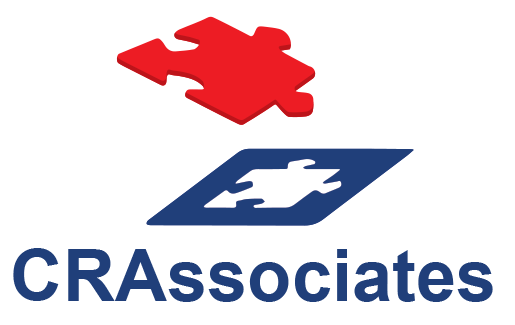Community & Economic Development for Rural Communities
There are many federal, state, local, nonprofit and for-profit community and economic development subsidies, which target rural communities.
We represent manufacturers, healthcare providers, educational institutions, renewable energy providers, recycling providers, multifamily developers, and nonprofits.
Community Reinvestment Associates, LLC is a national boutique financial subsidy placement firm specializing in bridging financial gaps by identifying and securing community and economic development subsidies, as well as traditional debt and equity.
 We have facilitated over $4.2 billion of community and economic development financings, including those involving new markets tax credits; historic tax credits and preservation easements; low-income housing tax credits; opportunity zone financing; USDA Programs; and CDFI Programs. Additionally, we have extensive experience in applying for and obtaining tax increment financing, taxable bonds, tax-exempt bonds, and various federal, state and local subsidies, as well as facilitating private-public partnerships, including securing traditional debt, equity, and donations. All of these sources of financing are collectively known as the “capital stack.”
We have facilitated over $4.2 billion of community and economic development financings, including those involving new markets tax credits; historic tax credits and preservation easements; low-income housing tax credits; opportunity zone financing; USDA Programs; and CDFI Programs. Additionally, we have extensive experience in applying for and obtaining tax increment financing, taxable bonds, tax-exempt bonds, and various federal, state and local subsidies, as well as facilitating private-public partnerships, including securing traditional debt, equity, and donations. All of these sources of financing are collectively known as the “capital stack.”
Tax credit finance consists of selling or transferring tax credits to investors which provides significant cash and/or forgivable loans to qualified Borrowers and projects. This process is referred to as “tax credit syndication.” Often these transactions involve leveraging other sources of financing which provide a significant multiplier effect in monetizing these credits as well as other pieces of the capital stack.
We have several years of experience in financial, legal and accounting matters as well as substantial experience in community and economic development. This experience provides us with the ability to underwrite financings for the each of the community and economic development programs; identify sources of the capital stack; secure the capital stack; and efficiently and effectively structure and close these complex financings.
We assist our clients with respect to, for example:
 applying for financing under the federal new markets tax credit program (the “NMTC Program”);
applying for financing under the federal new markets tax credit program (the “NMTC Program”);- applying to the United States Agriculture Department (the “USDA”), including subsidies provided by 8 of its major Business Programs and 5 of its major Community Facilities Programs (as well as representing Borrowers applying to applicants that have received such subsidies to lend or otherwise provide to Borrowers); and
- applying to the Community Development Financial Institutions Fund (the “CDFI Fund”), including 5 of its major community development programs (of which the NMTC Program is a part) (as well as representing Borrowers applying to applicants that have received such subsidies to lend or otherwise provide to Borrowers).
We quarterback each NMTC financing from start to finish.
Each year the Community Development Financial Institutions Fund (the “CDFI Fund,” which is a division of the U.S. Treasury Department) awards $3.5 billion to applicants, which are “qualified community development entities” (“CDEs”).
The NMTC Program
Rural Borrower or nonprofit operations and projects that a good candidates for the NMTC Program include those involving manufacturing, health care, grocery, education, qualified mixed-use, community-based services, renewable energy and recycling.
 NMTCs are equal to 39% of the NMTC financing, which is a “qualified equity investment” (a “QEI”).
NMTCs are equal to 39% of the NMTC financing, which is a “qualified equity investment” (a “QEI”).
None of the Borrower, its affiliates or owners recognize the NMTCs.
A NMTC Investor is typically a financial institution or a large corporation.
A NMTC Investor does not receive any direct or indirect ownership interest in the Borrower.
Instead, a NMTC Investor receives a direct or indirect ownership interest in an affiliate the Allocatee, which affiliate provides the NMTC financing to the Borrower.
A NMTC Investor effectively “purchases” the NMTCs based on: (a) current market pricing; (b) desirability of participating in the particular NMTC financing; and (c) whether or not other NMTC Investors are competing to participate in the particular NMTC financing.
Therefore, it is critical that Borrowers generate as much interest among NMTC Investors as possible in order to obtain the best pricing for the NMTCs, which directly increases the NMTC Program subsidy to the Borrower.
Generally, with respect to the Forgiven NMTC Loan:
- the principal and favorable terms of which are provided by the proceeds of the NMTC Investor’s “purchase price” for the NMTCs;
- it only requires approximate 1.0% to 1.2% interest-only payments during the 7-year NMTC compliance period; and
- it is forgiven at the end of the 7-year NMTC compliance period.


Generally, with respect to the Non-Forgiven NMTC Loan:
- a portion of the principal and the favorable terms of which are the provided by, or the result of, the NMTC Investor’s “purchase” of the NMTCs;
- it only requires below-market interest-only payments during the 7-year NMTC compliance period; and
- after the 7-year NMTC compliance period, the loan amortizes through its maturity date of up to 40 years (which can be beyond any secured asset’s useful life).
Generally, the benefits of the NMTC Program subsidy (whether in the form of the Forgiven NMTC Loan or the Non-Forgiven NMTC Loan) include many of the following:
 gap financing;
gap financing;- in the case of the Forgiven NMTC Loan, approximate 1.0% to 1.2% interest-only payments during the 7-year NMTC compliance period and forgiveness after such period;
- in the case of the Non-Forgiven NMTC Loan, below-market interest-only payments during the 7-year NMTC compliance period (which rate may continue through the maturity date which can be up to 40 years and beyond any secured asset’s useful life);
- subordination to existing and subsequent debt;

- various non-traditional and favorable terms;
- subject to flexible financial underwriting criteria;
- ability to “leverage” its other sources of financing for a multiplier economic benefit;
- “softer” foreclosure and enforcement rights if there is a default; if applicable, state NMTCs provide additional subsidy;
- ability to obtain additional financing; and
- substantial community and economic impacts to residents in “Low-Income Communities” and “Targeted Populations,” including “Low-Income Persons.”
For a more detailed discussion of the benefits of NMTC financing to a Borrower, and applicable legal requirements and underwriting requirements, please click on the following link:
Please click the following link to watch our pre-recorded webinar:
To apply as a Borrower for NMTC financing, please click on the following link:






